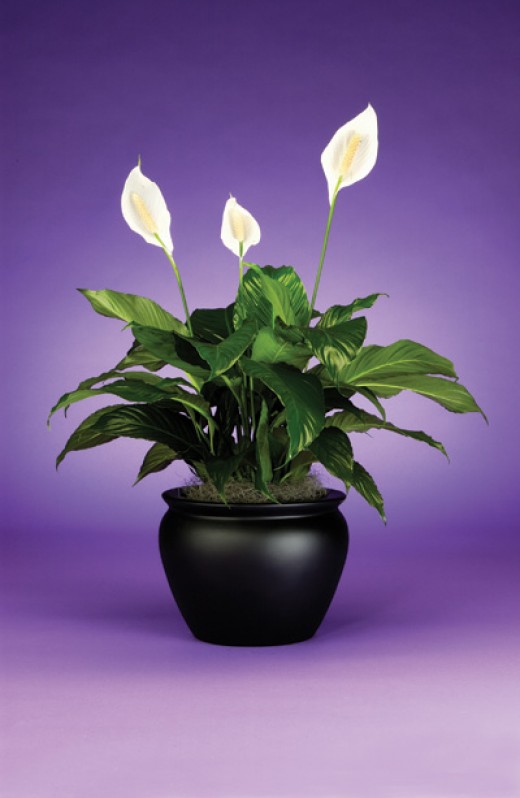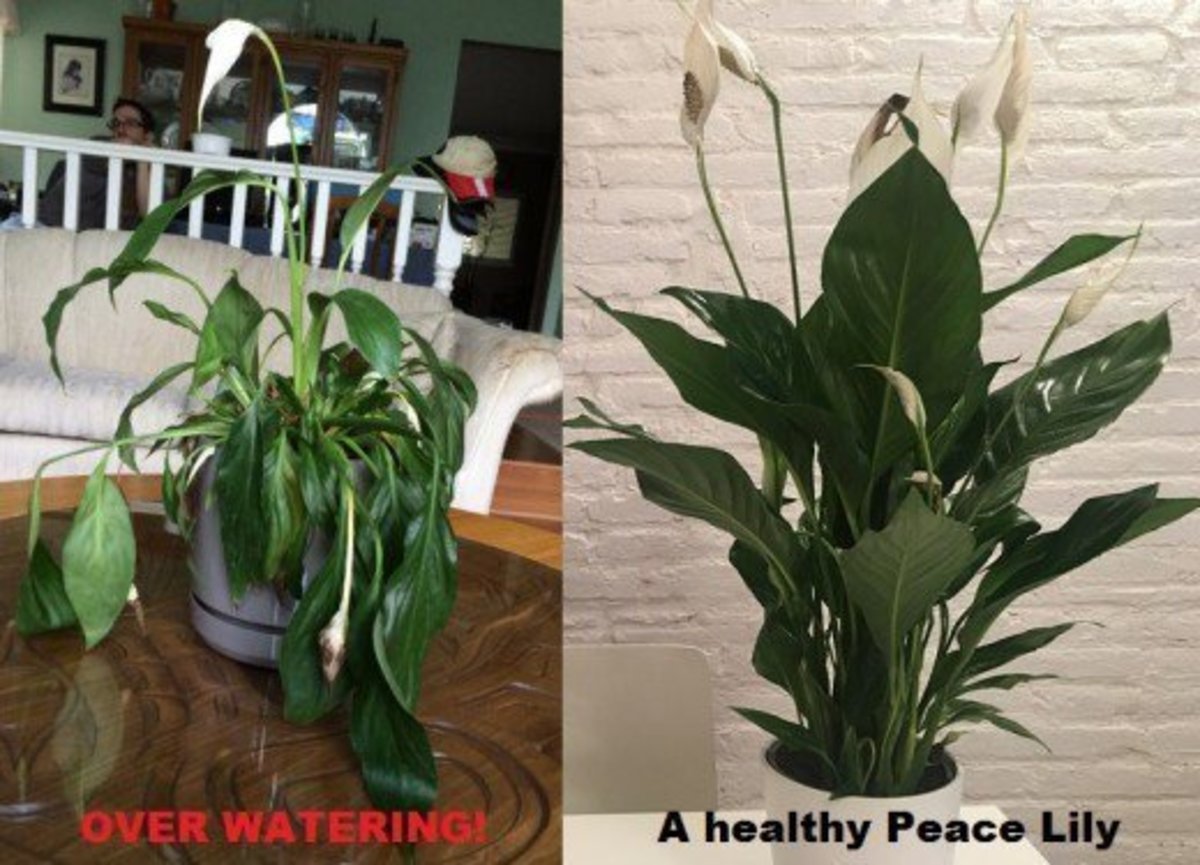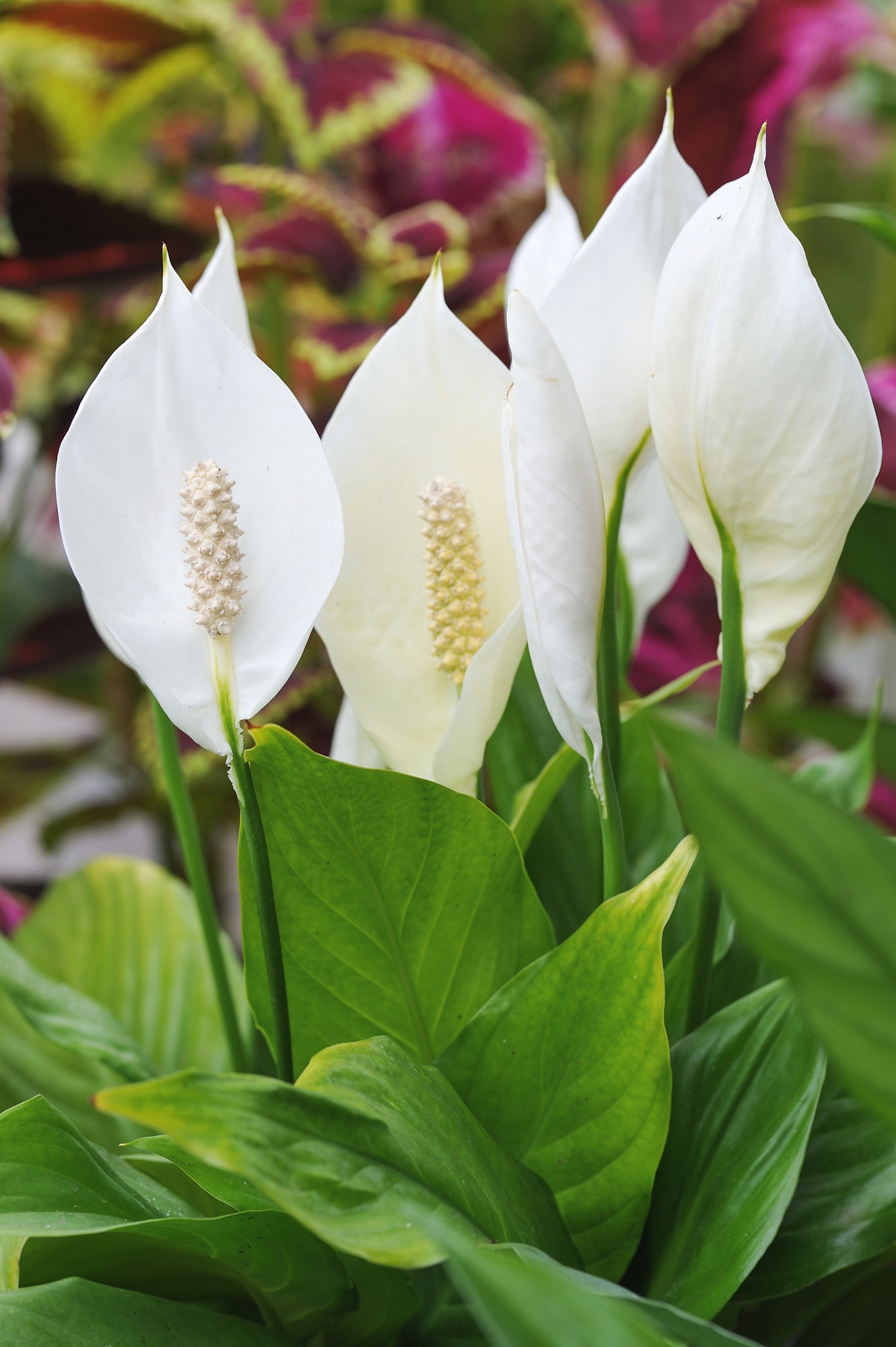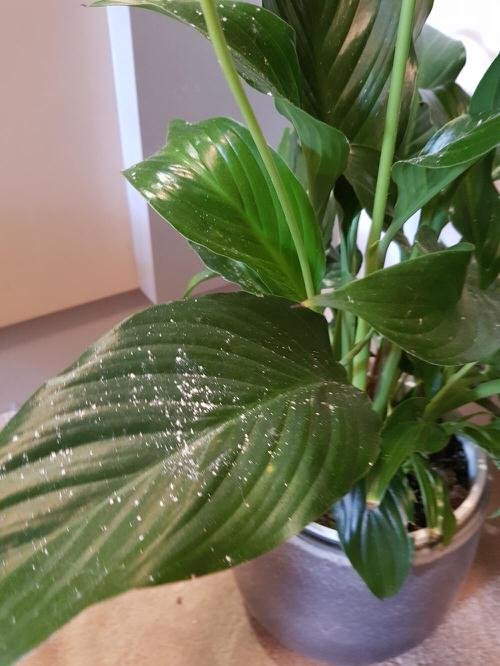Unlocking the Secrets to a Thriving Peace Lily
Peace lily plants have become a staple in many indoor spaces due to their elegant appearance, air-purifying properties, and low-maintenance requirements. These versatile plants can thrive in a variety of environments, from homes to offices, and are known to promote a sense of serenity and calmness. However, to ensure optimal growth and blooming, it’s essential to understand the specific needs of peace lily plants and provide them with the right care and attention.
One of the primary reasons peace lily plants are so popular is their ability to purify the air and remove toxins from the environment. According to the NASA Clean Air Study, peace lily plants are capable of removing up to 79% of airborne toxins, including benzene, formaldehyde, and trichloroethylene. This makes them an excellent choice for indoor spaces, particularly in areas with poor air quality.
In addition to their air-purifying properties, peace lily plants are also known for their beautiful white blooms, which can last for several weeks. These blooms are not only aesthetically pleasing but also fragrant, emitting a sweet, floral scent that can fill a room. To encourage blooming, it’s essential to provide peace lily plants with the right conditions, including bright, indirect light and moderate watering.
While peace lily plants are relatively low-maintenance, they still require proper care and attention to thrive. This includes watering, fertilizing, pruning, and repotting, all of which will be discussed in detail throughout this article. By following these guidelines and providing your peace lily plant with the right care, you can enjoy its beauty and benefits for years to come.
For those looking to learn how to take care of peace lily plants, this article will provide a comprehensive guide to help you get started. From creating the perfect environment to troubleshooting common problems, we’ll cover everything you need to know to keep your peace lily plant happy and thriving.
How to Create the Perfect Environment for Your Peace Lily
Peace lily plants are adaptable to a variety of environments, but they still require specific conditions to thrive. To create the perfect environment for your peace lily, it’s essential to consider the lighting, temperature, and humidity levels in your home or office.
Lighting is one of the most critical factors in peace lily care. These plants prefer bright, indirect light, but they can tolerate low light conditions. Placing your peace lily near an east- or west-facing window is ideal, as it will receive gentle, indirect light. Avoid placing your peace lily in direct sunlight, as it can cause the leaves to become scorched.
Temperature is also crucial for peace lily plants. They prefer temperatures between 65°F to 80°F (18°C to 27°C), which is typical for most indoor spaces. Avoid placing your peace lily near heating or cooling vents, fireplaces, or drafty windows, as it can cause temperature fluctuations.
Humidity is another essential factor in peace lily care. These plants prefer a humid environment, but they can adapt to average humidity levels. To maintain the right humidity levels, you can place the peace lily pot on a tray filled with water and pebbles or use a humidifier nearby.
In addition to these conditions, it’s also essential to consider the air circulation around your peace lily. Good air circulation can help prevent fungal diseases and promote healthy growth. Make sure to keep your peace lily at least 6-8 inches away from any walls or surfaces to ensure proper air circulation.
By creating the perfect environment for your peace lily, you can help it thrive and enjoy its beautiful blooms and air-purifying benefits. Remember to monitor the conditions in your home or office and adjust them accordingly to ensure your peace lily receives the best care possible.
The Art of Watering: A Delicate Balance for Peace Lilies
Watering is one of the most critical aspects of peace lily care. These plants require consistent moisture, but overwatering can be detrimental to their health. To master the art of watering, it’s essential to understand the delicate balance between moisture and dryness.
Checking soil moisture is the first step in determining when to water your peace lily. Stick your finger into the soil up to the first knuckle, and if the soil feels dry, it’s time to water. If the soil feels damp or wet, wait a few more days before watering again.
When watering your peace lily, make sure to use room-temperature water. Avoid using cold or hot water, as it can shock the roots and cause damage. Water your peace lily thoroughly, allowing excess water to drain from the pot. This will help prevent root rot and ensure the soil is consistently moist.
One of the most common mistakes when caring for peace lily plants is overwatering. This can lead to root rot, which can be fatal to the plant. To avoid overwatering, make sure to check the soil moisture regularly and adjust your watering schedule accordingly.
Underwatering can also be detrimental to peace lily plants. If the soil becomes too dry, the leaves may turn yellow or brown, and the plant may become stressed. To avoid underwatering, make sure to water your peace lily regularly, especially during the spring and summer months when it’s actively growing.
By mastering the art of watering, you can help your peace lily thrive and enjoy its beautiful blooms and air-purifying benefits. Remember to monitor the soil moisture regularly and adjust your watering schedule accordingly to ensure your peace lily receives the right amount of moisture.
Fertilizing for Optimal Growth: A Peace Lily’s Nutritional Needs
Fertilizing is an essential part of peace lily care, as it provides the necessary nutrients for optimal growth and blooming. Peace lily plants require a balanced fertilizer that is high in phosphorus, which promotes blooming and root development.
When choosing a fertilizer for your peace lily, look for a balanced formula that contains equal amounts of nitrogen, phosphorus, and potassium (NPK). A 20-20-20 formula is ideal, as it provides the necessary nutrients for healthy growth and blooming.
It’s also important to consider the type of fertilizer you use. Peace lily plants prefer a water-soluble fertilizer, as it is easily absorbed by the roots. Avoid using granular fertilizers, as they can burn the roots and cause damage.
How often to fertilize your peace lily depends on the time of year and the plant’s growth cycle. During the spring and summer months, fertilize your peace lily once a month to promote healthy growth and blooming. During the fall and winter months, fertilize your peace lily once every two months, as the plant is dormant and requires fewer nutrients.
Soil pH balance is also crucial for peace lily plants. These plants prefer a slightly acidic to neutral soil pH, ranging from 6.0 to 7.0. If your soil pH is too high or too low, it can affect the plant’s ability to absorb nutrients and cause damage.
By fertilizing your peace lily regularly and maintaining the right soil pH balance, you can promote healthy growth and blooming. Remember to follow the guidelines outlined in this article to ensure your peace lily receives the necessary nutrients for optimal growth and blooming.
Pruning and Grooming: Maintaining Your Peace Lily’s Elegant Appearance
Pruning and grooming are essential parts of peace lily care, as they help maintain the plant’s elegant appearance and promote healthy growth. By removing dead or dying leaves and trimming back overgrown stems, you can keep your peace lily looking its best and encourage blooming.
To prune your peace lily, start by removing any dead or dying leaves. Use a pair of clean scissors or pruning shears to cut off the leaves at the base of the plant. Make sure to disinfect your tools between cuts to prevent the spread of disease.
Next, trim back any overgrown stems to maintain the plant’s shape and promote healthy growth. Cut back the stems to about 6-8 inches from the base of the plant, making sure to leave at least two nodes on each stem. This will help the plant produce new growth and encourage blooming.
In addition to pruning, you can also groom your peace lily to maintain its elegant appearance. Use a soft-bristled brush or a damp cloth to gently remove any dust or debris from the leaves. This will help keep the plant looking its best and prevent the buildup of pests and diseases.
Encouraging blooming is also an important part of peace lily care. To encourage blooming, make sure your peace lily is receiving enough light and water. You can also fertilize your peace lily with a balanced fertilizer to promote healthy growth and blooming.
By pruning and grooming your peace lily regularly, you can keep it looking its best and promote healthy growth. Remember to follow the guidelines outlined in this article to ensure your peace lily receives the best care possible.
Pest Control and Common Problems: Troubleshooting Your Peace Lily
Peace lily plants are generally hardy and resistant to pests and diseases, but they can still be affected by common problems. By identifying and addressing these issues early on, you can prevent them from becoming major problems and keep your peace lily healthy and thriving.
Spider mites are one of the most common pests that can affect peace lily plants. These tiny, spider-like insects feed on the plant’s sap, causing yellowing or bronzing of the leaves. To control spider mites, use a gentle insecticidal soap or neem oil, and make sure to isolate the plant to prevent the mites from spreading.
Mealybugs are another common pest that can affect peace lily plants. These small, white insects feed on the plant’s sap, causing stunted growth and yellowing of the leaves. To control mealybugs, use a gentle insecticidal soap or neem oil, and make sure to remove any infested leaves or stems.
Root rot is a common problem that can affect peace lily plants, especially if they are overwatered. To prevent root rot, make sure to water your peace lily carefully, and avoid getting water on the leaves or crown of the plant. If you suspect that your peace lily has root rot, repot the plant in fresh, well-draining soil, and trim back any affected roots.
In addition to these common problems, peace lily plants can also be affected by other issues, such as leaf drop, brown tips, and slow growth. By identifying the underlying cause of these problems and taking corrective action, you can help your peace lily recover and thrive.
By following the guidelines outlined in this article, you can help prevent common problems and keep your peace lily healthy and thriving. Remember to monitor your plant regularly, and take action quickly if you notice any signs of pests or diseases.
Repotting and Propagation: Giving Your Peace Lily a Fresh Start
Repotting and propagation are essential parts of peace lily care, as they help to refresh the soil, provide a larger pot if necessary, and create new plants. By repotting and propagating your peace lily, you can give it a fresh start and encourage healthy growth.
To repot your peace lily, start by choosing a pot that is only slightly larger than the current one. Use a well-draining potting mix and gently remove the plant from its pot. Inspect the roots and trim back any that are circling or damaged. Place the plant in its new pot and water thoroughly.
Propagation is also a great way to create new peace lily plants. To propagate your peace lily, start by selecting a healthy stem with at least two nodes. Cut the stem from the plant and remove any lower leaves. Place the stem in a pot filled with a well-draining potting mix and water thoroughly. Keep the soil moist and warm until roots develop.
When caring for newly repotted or propagated peace lily plants, make sure to provide them with bright, indirect light and maintain a consistent temperature. Water the plants carefully, as the soil may be more prone to drying out. Fertilize the plants regularly, but at a lower strength than usual, to promote healthy growth.
By repotting and propagating your peace lily, you can give it a fresh start and encourage healthy growth. Remember to follow the guidelines outlined in this article to ensure your peace lily receives the best care possible.
Common Mistakes to Avoid: Ensuring the Long-Term Health of Your Peace Lily
When caring for peace lily plants, it’s essential to avoid common mistakes that can affect their long-term health. By following the guidelines outlined in this article, you can ensure your peace lily receives the best care possible and thrives for years to come.
One of the most common mistakes to avoid is overwatering. Peace lily plants are prone to root rot if the soil is too moist, so it’s essential to check the soil moisture regularly and avoid getting water on the leaves or crown of the plant.
Underwatering is also a common mistake that can affect peace lily plants. If the soil is too dry, the leaves may turn yellow or brown, and the plant may become stressed. To avoid underwatering, make sure to water your peace lily regularly, but avoid overwatering.
Neglecting fertilization is another common mistake that can affect peace lily plants. Peace lily plants require regular fertilization to promote healthy growth and blooming. Use a balanced fertilizer and follow the instructions on the label for optimal results.
By avoiding these common mistakes, you can ensure your peace lily receives the best care possible and thrives for years to come. Remember to follow the guidelines outlined in this article and take action quickly if you notice any signs of pests or diseases.
By following the tips and guidelines outlined in this article, you can learn how to take care of peace lily plants and keep them healthy and thriving. With proper care and attention, peace lily plants can bring beauty and serenity to any indoor space.





:max_bytes(150000):strip_icc()/grow-peace-lilies-1902767-hero-01-01-9cd2172cd5ef4d7198351df445b8e851.jpg)



